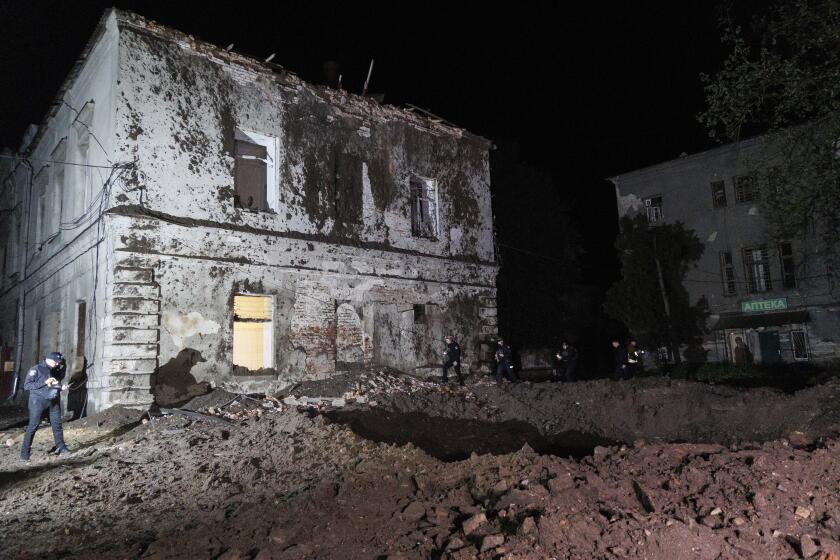Middle Easterners crossing border from Mexico? It’s rare

For months, some conservative members of Congress and their allies have warned that people from the Middle East could use the Mexican border to gain illegal entry to the U.S. and pose a terrorist threat. Obama administration officials have said such a scenario is unlikely and border agents are prepared to respond if it does happen.
What are the facts? Recent cases provide some evidence for both sides in that debate: Several people from the Mideast have been apprehended at the border in recent months. But none of them have been publicly linked to threats against the U.S. One of them, in fact, claimed to be fleeing terrorism.
But the numbers aren’t large. Of the tens of thousands of individuals apprehended in the southwestern border region between 2010 and July 2014, fewer than 50 originated in Middle Eastern or South Asian countries sometimes linked to Islamic extremism, mainly Pakistan, Egypt and Yemen, according to a U.S. Customs and Border Protection report.
In one case, four self-proclaimed members of the Kurdistan Workers Party were arrested and deported in August after crossing the U.S.-Mexico border, Homeland Security Secretary Jeh Johnson said.
The Kurdish nationalist group, also known as PKK, is designated by the State Department as a terrorist organization because of its attacks against the Turkish government. But that doesn’t automatically qualify as a threat to the United States. Recently, for example, PKK fighters have been allied with the U.S. in battling Islamic State militants in the Syrian border town of Kobani.
It was never made clear why the four PKK members were attempting to enter the country.
In one case, a border crosser from the Middle East said he was trying to flee terrorism in the region.
A Jordanian businessman, Khaled Abdelrahman Mohammad Mehyar, 52, was caught Aug. 29 entering the U.S. illegally from Mexico. He told law enforcement officials that he feared being sent home because Islamic State militants might one day attack Jordan and “do what they have been doing in Iraq,” according to Homeland Security Department documents obtained by the Los Angeles Times.
In an Aug. 30 field report by Customs and Border Protection, Mehyar described a journey to the U.S. that began in Miguel Aleman, Mexico, with a smuggler named El Raton — “mouse” — and ended with an individual named Tornado, to whom Mehyar said he paid a $7,000 smuggling fee. Mehyar was driven to the small port of entry at Roma, Texas, and told by his guide that as soon as he crossed the Rio Grande he should “run to the Jack in the Box.”
When federal agents captured him, he told them he did not want to return to Jordan because he feared for his safety and the safety of his family, including a wife and four children who are still there. He cited no specific threats against him. When asked to name what terrorist group he feared, he mentioned Islamic State, which about a week earlier had released its first beheading video, of American journalist James Foley.
But does that mean the turbulence of the Middle East is making its way across the Atlantic to America’s southwest border? Or even that conflict in the region is driving refugees to North America in search of asylum?
Not necessarily.
Keep in mind that anyone who expresses fear of being returned home is eligible to apply for asylum in the United States.
“Any individual who asserts a fear of persecution or torture … is referred to an asylum officer for an interview to determine if the individual has a credible fear,” Homeland Security spokeswoman Marsha Catron said.
A high-ranking Border Patrol official, who was not authorized to speak publicly because the case is continuing, said some aspects of Mehyar’s story have prompted skepticism among U.S. officials.
“He obviously didn’t want to get caught, or he wouldn’t have gone this roundabout way to get into the U.S.,” the official said. “It set off alarms, and the FBI and others wanted to sit down with him.”
Mark Jones, a Rice University border expert, voiced doubt about Mehyar’s statement that he feared Islamic State. “The smartest claim he can make for asylum is to simply invoke ISIS,” he said, using an acronym for the group.
Tony Payan, another border expert at Rice University, could recall only one similar incident from several years ago when an Iraqi showed up at the border between Tijuana and San Diego and asked for asylum from the warfare in his country. He also was seeking to join his family in California.
“He’s one of the other very few individuals I’ve heard of who’s done this,” Payan said. “He got caught too.”
In any case, Mehyar’s experience is important in one respect, Jones said. It “shows how easy it is to get here.’’
Staff writers Lisa Mascaro and Brian Bennett in Washington contributed to this report.
More to Read
Start your day right
Sign up for Essential California for news, features and recommendations from the L.A. Times and beyond in your inbox six days a week.
You may occasionally receive promotional content from the Los Angeles Times.







